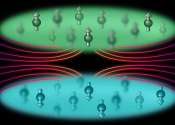Physicists arrange atoms in close proximity, paving way for exploring exotic states of matter
Proximity is key for many quantum phenomena, as interactions between atoms are stronger when the particles are close. In many quantum simulators, scientists arrange atoms as close together as possible to explore exotic states ...









